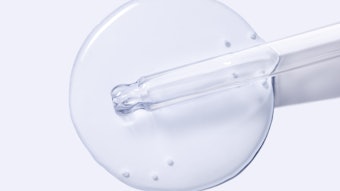
There seems to be some confusion when it comes to the difference between acids and enzymes. The keywords in this difference are dissolve and digest. Many advertisements, articles and even some text books erroneously state that enzymes dissolve. The fact of the matter is enzymes digest and acids dissolve.
Choosing an Exfoliant
Regardless of the form of chemical exfoliation chosen, the benefits cannot be ignored. It is important to educate our clients about the decline of cell regeneration that comes with age. The shedding of corneocytes that used to take a month to turnover now remain glued in place for two to three months longer. This prolonged adhesion can cause a buildup of scaly flaky skin and a compromised barrier, leading to transepidermal water loss (TEWL). If bacteria is present, breakouts will also be present, even with mature skin. Broken and dilated capillaries exacerbate the issue, because the self cleansing mechanism breaks down and oxygen cannot feed the cells. We need to explain the importance of revving up microcirculation and infusing antioxidants that neutralize free radicals. Clients so often think they have dry skin, when it is simply neglected and dehydrated.
Chemical exfoliation with acids is an effective anti-aging method, but it is simply not the best option for everyone. For sensitive skin, or those prone to hypopigmentation, enzymes are a more logical choice. There is strong evidence that telomerase activity is increased in the epidermis when skin is inflamed. It is important to read the skin’s reaction each time it is exfoliated. A more gentle approach is needed when extended erythema, sensitivity and chronic dehydration are present, at which point enzymes would be the logical choice. This article will detail the activity of both acids and enzymes to explore which skin types and conditions each is appropriate for.












